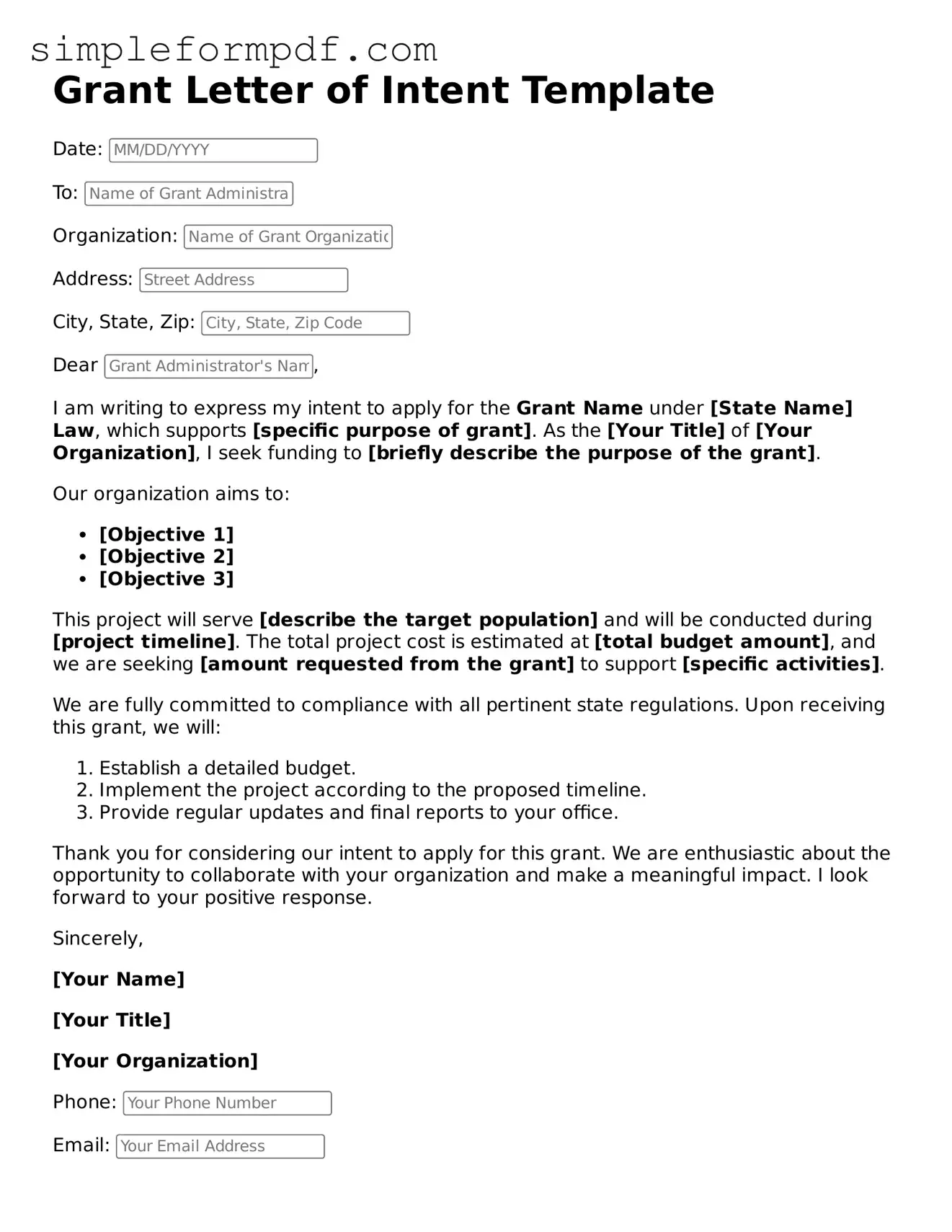Fillable Grant Letter of Intent Template
A Grant Letter of Intent form serves as a preliminary proposal submitted to a funding organization, expressing the applicant's intention to apply for a grant. This document outlines the project's purpose, potential impact, and the applicant's qualifications. By completing this form, you take the first step toward securing funding for your important initiatives; click the button below to get started.
Launch Editor
